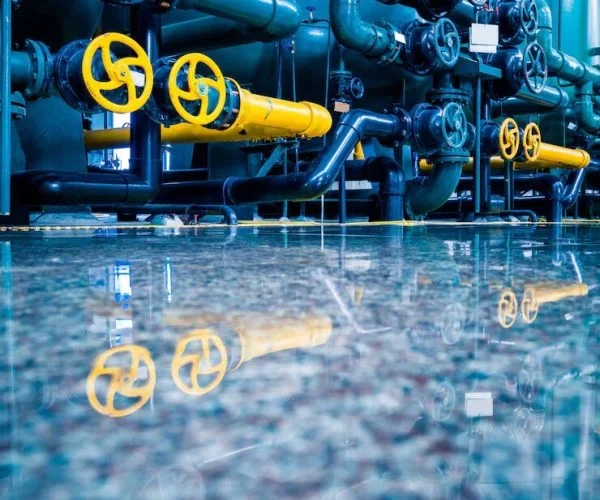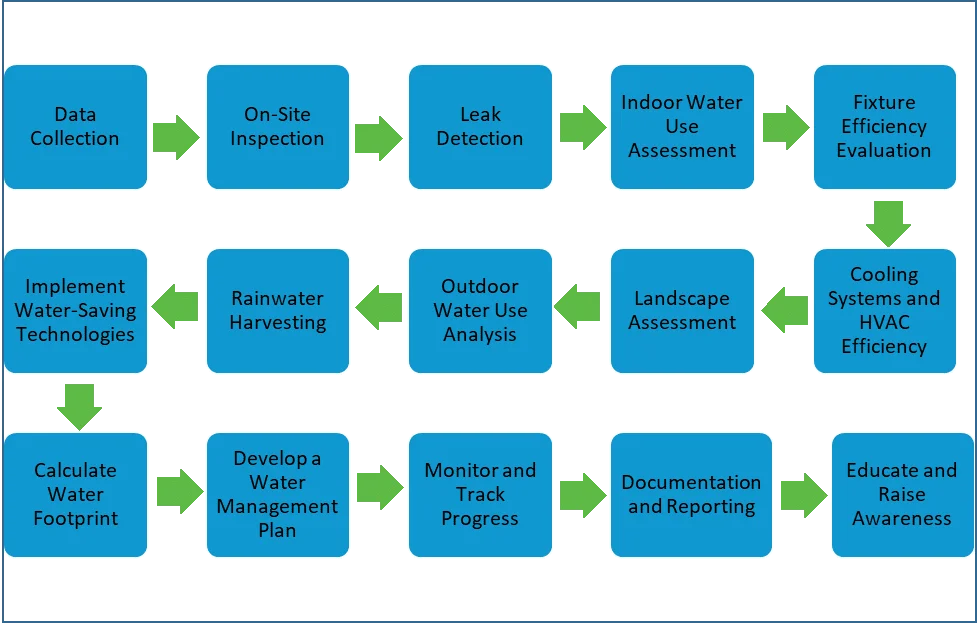Water Audit
A water audit is a systematic assessment of water consumption. It provides organizations with a clear understanding of their water usage patterns, helps detect hidden leaks, and identifies opportunities for resource optimization. The outcome includes enhanced water efficiency, lower operational costs, and a reinforced commitment to sustainability objectives.
Optimize Water Usage & Enhance Sustainability with Expert Water Audits
Water is a precious resource. Efficient water management is crucial for both operational success and environmental responsibility. Our expert water audit services empower businesses, industries, and institutions to pinpoint inefficiencies, minimize waste, and implement cost-effective water conservation strategies.

Tailored Water Audit Options:
- Preliminary Audit: A basic assessment for quick insights into potential water savings.
- Target-Based Audit: A focused evaluation of specific water-use areas to address particular concerns.
- Comprehensive Audit: An in-depth analysis for long-term efficiency improvements and strategic water management.
Key Advantages of a Water Audit:
- Cost Savings: Lower operational expenses by minimizing water waste.
- Regulatory Compliance: Meet industry and local water conservation requirements.
- Environmental Stewardship: Reduce your ecological footprint through optimized water use.
- Enhanced System Performance: Extend the lifespan of equipment and reduce maintenance needs.
Serving a Wide Range of Industries:
Our water audit services are beneficial for diverse sectors, including:
- Industrial facilities
- Commercial buildings
- Residential complexes
- Hospitality and healthcare
- ducational institutions
- Irrigation and agriculture

Our Comprehensive Water Audit Process:
We thoroughly assess all key areas of water usage,
Water Supply & Distribution Systems
Audits assess leak detection, meter accuracy, pressure management, and pipe conditions to minimize losses and optimize distribution. Storage efficiency is evaluated for evaporation control and overflow prevention.
Wastewater Management & Recycling
Effluent quality, treatment efficiency, and compliance are assessed to optimize recycling and reuse. Greywater and sludge management strategies are reviewed for sustainability and resource recovery.
Landscape & Outdoor Water Use
Irrigation efficiency, plant selection, and landscape design are optimized to minimize water demand. Rainwater harvesting, mulching, and runoff control enhance conservation efforts.
Cooling & Process-Specific Water Systems
Cooling tower performance, process water usage, and equipment efficiency are analysed to enhance water conservation. Opportunities for reuse, recycling, and transitioning from once-through cooling to closed-loop systems are identified.
Sanitation & Cleaning Operations
Fixture efficiency, leak detection, and cleaning practices are optimized to reduce consumption. Automated and waterless cleaning technologies are evaluated for further conservation.
Rainwater Harvesting & Reuse
Harvesting system design, storage, treatment, and distribution are assessed for seamless integration with existing infrastructure while ensuring regulatory compliance.
Our Methodology:

Why Partner with Us?
Our team possesses specialized expertise in water conservation and sustainability. We deliver tailored solutions based on data-driven insights, helping organizations achieve measurable efficiency gains while ensuring compliance with relevant regulations. Contact us today to begin optimizing your water usage and enhancing your sustainability efforts.
